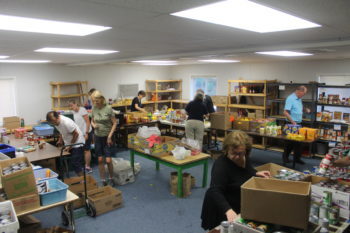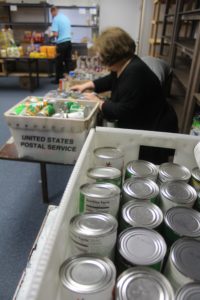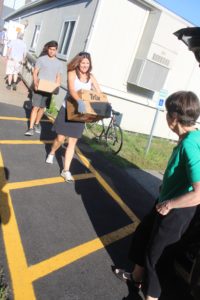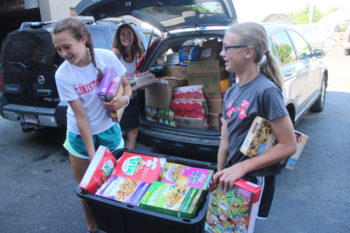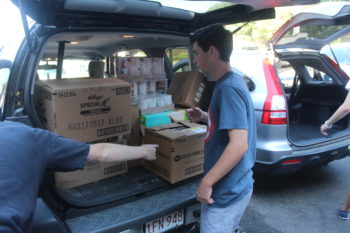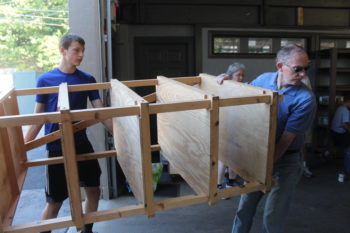Photo: Laying down a new roadway.
With the big bumps and potholes in and around Belmont Center smoothed out last week and the final sidewalks being laid near the commuter rail bridge, the Board of Selectmen voted Monday, Aug. 8, to OK the final layer of asphalt to be applied to Leonard Street and adjacent roadways as the $2.8 million Belmont Center Rehabilitation Project nears its completion.
But unlike the recent milling and smoothing of the streets which caused morning and evening commuters to endure detours and endless lines of traffic for nearly a week, this street restoration will be performed under the moon rather than the sun.
The selectmen voted to allow Charles Contracting of Watertown to do major paving between 8 p.m. to 5 a.m. beginning Monday, Aug. 22 and running through Thursday, Aug. 25. As with the repair of Belmont Street and Trapelo Road by the state in the past year, the paving schedule will occur overnight so not to disrupt Center businesses (with the exception of restaurants and other eateries) or clog the main way for commuters through the town’s retail center, according to David Kale, Belmont’s town administrator.
Neighborhoods and business in the Belmont Center area will be leafleted and a “reverse 911” call will be made to notify residents when the work takes place.
Kale said the same prohibitions on lights, radios, loud noise and idling equipment and vehicles the town placed on work on Belmont and Trapelo will be in effect.
Once the paving is completed, the new roadway will undergo the marking of lane lines, parking spaces and crosswalks beginning on Monday, Aug. 29 with that work also being done during the overnight. That work should take approximately a day less than the paving, said Kale.








